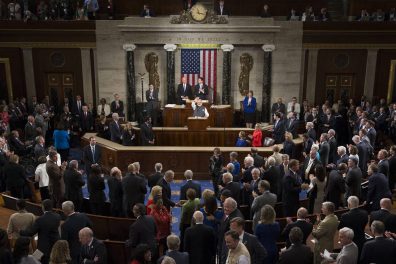Source: BioGaia
Mar 19, 2020 – As there has been a considerable increase of questions, BioGaia has summarized the scientific information about the SARS-CoV-2 virus and the possible beneficial role of probiotics in the current COVID-19 global outbreak.
Questions:
- Could probiotics protect against SARS-CoV-2 virus infection and aid in avoiding COVID-19?
- Could probiotics help our immune system to prevent or potentially fight Coronavirus infections?
Deep Immune Probiotic tablets – Image credit: Melaleuca
- What are the scientific facts and the credible sources?
Below is summarized and updated information about this topic.
Note that to date, the scientific information we have on the current COVID-19 outbreak in terms of viral transmission, physiopathology and disease control is still preliminary and might change as time passes and more information becomes available.
Coronaviruses, SARS-CoV-2 virus and COVID-19 disease: the facts
Coronaviruses are a large group of viruses common among mammals and birds. “Corona” means “Crown” in Latin, and it refers to the distinctive shape of these viruses, where the genetic material (single stranded RNA) is contained within an envelope which has protein spikes pointing outside the structure. This gives a specific “crown morphology” to all Coronaviruses.
In some cases, Coronaviruses can spread from animals to humans in a process called spillover zoonosis, where many animal hosts can carry the virus before it reaches humans. When this happens, Coronaviruses can cause different types of respiratory and sometimes gastrointestinal diseases. Respiratory diseases caused by Coronaviruses can range from symptoms resembling that of common colds to severe pneumonia, but for the vast majority the symptoms are mild, and people recover after few days of infection.
In December 2019, a new type of Coronavirus causing a cluster of pneumonia cases and deaths, emerged in the city of Wuhan, China, and rapidly spread-out to other countries in the world, to become today a pandemic outbreak, according to the World Health Organization.
This new Coronavirus, called SARS-CoV-2 based on its genetic similarities with SARS-CoV (the virus identified in 2002 as the cause of Severe Acute Respiratory Syndrome), has been originally linked to a seafood and live animal market in Wuhan, China.
It has been transferred to humans from a yet non-accurately identified animal. Most probably this newly discovered virus originated in bats, and since a 96% identical virus was isolated from pangolins, these animals could have been intermediate hosts before the virus transferred to humans. The new identified Coronavirus is the 7th known human Coronavirus.
1) Human Coronavirus 229E (HCoV-229E)
2) Human Coronavirus OC43 (HCoV-OC43)
3) SARS-CoV
4) Human Coronavirus NL63 (HCoV-NL63, New Haven Coronavirus)
5) Human Coronavirus HKU1
6) Middle East Respiratory Syndrome Coronavirus (MERS-CoV)
7) SARS-CoV-2
This virus is completely new for our immune system. Before the current outbreak, no humans are known to be exposed to it. Therefore, our immune systems are naïve to the virus and have subsequently not had the chance to develop natural immunity against it.
This is one of the reasons why the virus is spreading so rapidly through the population. Healthcare professionals are still in the process of understanding how the virus is transmitted, what is the physiopathology associated to its infection and what could be the therapeutic targets and strategies.
On February 11th, WHO has named the disease caused by SARS-CoV-2 responsible for the actual global pandemic outbreak as COronaVIrus Disease Discovered in 2019 or COVID-19.
“…we strongly support the reinforcement of our immune system by any scientifically valid strategy. Help in maintaining a healthy gut microbial diversity and prevent, intestinal dysbiosis in elderly, infants and the general population is important.”
COVID-19 physiopathology, epidemiology and treatment
Scientists have some insights of how the virus spreads from one person to another, but this information is dynamic and might be updated in the coming days. So far, scientists have established that the virus reproducibility rate, R0, meaning how many people an infected person can potentially infect, is 2 to 3, but the information is still preliminary and based on diverse transmission scenarios.
What is clear from the most recent studies and publications is that SARS-CoV-2 uses its protein spikes located on its outside “Crown” to invade cells lining the respiratory tract. SARS-CoV-2 bind to their target cells through angiotensin-converting enzyme 2 (ACE2). This enzyme is an “entry door” for the virus into our cells .
Since viruses are not fully autonomous, they need to enter into a human cell to divert the cellular machinery to their advantage and be able to produce huge numbers of copies of new viral particles upon human cell death. Once SARS-CoV-2 enters our respiratory epithelial cells, it kills them, and a big number of viral particles can be located in the respiratory mucus. The virus is then located in the microscopic droplets that can be projected when we cough, sneeze or simply speak.
The projection outreach of these droplets in the air depends on their own weight and has been evaluated to range from 1 meter to 3 meters in distance.
COVID-19 symptoms can vary greatly. Some people don’t develop any symptoms and the infection is mild. For other people symptoms can range from fever, cough, dyspnea or shortness of breath, myalgia, fatigue, normal or decreased leukocyte counts, and radiographic evidence of pneumonia .
In some severe cases, pneumonia can drive to Acute Respiratory Distress Syndrome leading to septic shock and death.
This condition is more common in people with chronic diseases like type 1 and 2 diabetes, hypertension, cardiovascular diseases or asthma. It is important to note that the expression of ACE2 is substantially increased in patients with type 1, type 2 diabetes or hypertension, who often are under treatment with ACE 2 inhibitors.
The incubation period of the disease can vary from 1 to 14 days with an average of 5 days. Since the SARS-CoV-2 spreads rapidly in the population, avoiding contact with infected people is the only real measure to stop the spreading.
Some recent studies have shown asymptomatic people can also infect other people, making the control of the outbreak extremely difficult.
There is no specific treatment for COVID-19 yet. Treatment is focused on supportive care, providing oxygen, fluids and respiratory support for severely ill people. Early epidemiological data has shown some potential positive treatment of COVID-19 with these three drugs and potential vaccines:
- Chloroquine: an anti-malarial drug .
• Protease inhibitors like Ritonavir: an anti-HIV medication .
• Remdesivir: anti-viral drug previously used against Ebola. Large-scale clinical trials are underway in China right now .
• Vaccine candidates: many subcellular vaccinal strategies have been under consideration and in most of the cases a potential candidate vaccine will not be available for at least one-year.
Probiotics and COVID-19 disease
Since there is no vaccine available, or specific efficacious clinically proven treatment at the moment, preventing COVID-19 by maintaining high hygiene by washing our hands, avoiding contact with infected people and reinforcing our immune system are the best strategies.
Our body, and especially our gut, is home to trillions of beneficial bacteria that live in perfect harmony, helping us to digest food, eliminating toxins, producing active molecules and educating our immune system to protect us against harmful microbes. Scientists have named this microbial ecosystem the intestinal microbiome (14). Today science has reached a solid level of understanding of the correlations observed between gut microbiome structure and composition and health or disease.
It has been recently observed that an alteration of the physiological homeostasis of intestinal microbiota, also known as dysbiosis, is correlated with some diseases. Dysbiosis associated with a loss of species diversity were correlated with very diverse diseases from antibiotic-associated diarrhea to type 2 diabetes or common infectious diseases, among others (15).
Probiotic bacteria can interact with our gut microbiome to reinforce our immune system, increase immune responses and promote specific immune signaling with physiological relevance.
During the last several decades, several probiotics have shown to prevent and/or decrease the duration of either bacterial or viral infections. Most of the information available today about the reinforcement of immune health through probiotics has been demonstrated in animal models.
In mice, intranasal inoculation of L. reuteri or L. plantarum have been shown protective effects against pneumonia virus lethal infection.
Nevertheless, even if some patterns are common, not all probiotics involve the same mechanisms of action. Strain specificity is crucial to define the right probiotic for the right indication.
BioGaia’s strain L. reuteri DSM 17938 has been shown to protect against upper respiratory tract symptoms and gastrointestinal problems in children aged 6 months to 3 years old as well as to reduce the incidence of diarrhea in children aged 1 to 6 years old.
A randomized placebo-controlled trial with L. reuteri ATCC 55730 showed improved work-place healthiness by reducing short term sick-leave caused by respiratory or gastrointestinal problems in Tetra Pak workers in Sweden.
A recent meta-analysis has shown that probiotics may be associated with less antibiotics use in infants and children in the context of reducing the risk of symptoms of common cold .
Moreover, probiotics and prebiotics have been shown to be effective in elevating immunogenicity by influencing seroconversion and seroprotection rates in adults inoculated with influenza vaccines.
Combining probiotics with vitamins could also be a valid strategy to boost the immune system in a generic manner. For instance, vitamin D can modulate innate and adaptive immune responses beyond its effects on bone and calcium homeostasis.
Indeed, it has been demonstrated that not only vitamin D receptor is expressed on immune cells surface but also that all immunologic cells are able to synthesize vitamin D metabolite.
Conclusions
There is no scientific rationale for using probiotics to protect, prevent or treat COVID-19 and SARS-CoV-2 infection specifically.
Nevertheless, we strongly support the reinforcement of our immune system by any scientifically valid strategy. Help in maintaining a healthy gut microbial diversity and prevent, intestinal dysbiosis in elderly, infants and the general population is important.
Combining a healthy and balanced diet together with prebiotics, probiotics, vitamin supplementation, among others, could help us to reinforce our immune system during the COVID-19 outbreak.






